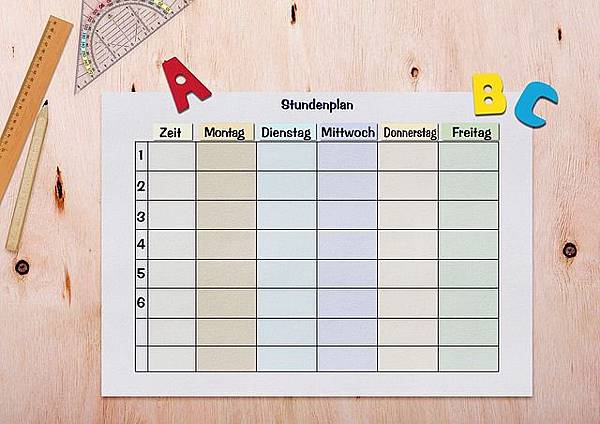
☆ 托福閱讀八大題型完整解析
與老托福相比較, IBT閱讀和其他部分一樣有很大的變化。
◇ IBT閱讀的主要變化有五點:
1. 題目的數量減少:從之前老托50道題目減少到目前39道;
2. 文章的篇數減少:從之前的5篇減少到目前的3篇;
3. 文章內容的長度增加:內容字數從之前的350字左右增加到目前650-700字/篇;
4. 題目的分數參差不齊:各個類型題目的分數根據其難易程度而定;
5. 出現了三類新題型:句子插入題, 句意解釋題目和表格題是新出現的題目類。
◇ 解決IBT閱讀中的插入句子題的五大步驟
插入句子題是IBT閱讀中的新題型。這類題目是給出一句話讓我們來判斷這句話應加入一個段落中四個方塊的哪個部分,用滑鼠雙擊所選的黑色方塊即可。做這類題目的關鍵首先是理解該句子,尋找其中的銜接詞,分析這個句子的特點和其在文中的作用,然後把這個句子帶入原文中檢驗其是否合適。
◇ 掌握銜接詞是解答插入句子題的關鍵
掌握銜接詞對解答這類問題非常重要,因為它是理解上下文和這個句子的邏輯關係的核心。
◎ 銜接詞語主要包括
代詞(指示代詞,例如this, these their, it, such, another ,這些通常是上文提到過的,所以可以採用就近原則來做。);
關鍵同義詞,
重複出現的形容詞,
副詞和
名詞;表示因果,
轉折等關係的過渡詞語:如,therefore, so, however, as a result, consequently, on the contrary, however 等;
遞進擴展詞:如,furthermore, also, as well, too, in addition, moreover, besides, even, additionally等;
結構配對詞:如,on the one hand…. on the other hand,some…others,同時還要注意一些表示
順序的詞,如first ,second ,third等。
◎ 我們來具體來一個例子:
1. But there is also another special kind of conversational flow among Southern women that contributed to their writing.
2. Some of their talk took the form of tales and vignettes told for their own sake.
3. Sometimes humorous, sometimes sad; all were as bright as the figures in the fine needlepoint.
4. Look at the four positions that indicate where the following sentences can be added to the …paragraph of the passage。
These tales included grotesque, comic, and poetic descriptions, character sketches, narratives, gusts of feeling, delicate ironies, and astute observations。
Click on a position to add the sentence to the passage。
A: position 1 B: Position 2 C: Position 3 D: Position 4
◎ 具體的解題步驟:
1. 理解要插入的句子:These tales included grotesque, comic, and poetic descriptions, character sketches, and narratives, gusts of feeling, delicate ironies, and astute observations. 我們看這個句子是主、謂、賓結構,其中賓語為一些列的並列名詞和短語。
2. 尋找銜接詞:這個句子的銜接詞為:These tales
3. 分析這個句子和上下文的關係:位置1 不可能,因為它後面的句子是一個主題型句子,即,提出論點,而我們要插入的句子為一個小點,屬於論據。然後看位置2,這裡出現了和我們要加入句子一樣的資訊點Some of their talk took the form of tales and vignettes told for their own sake。顯然句子放在位置2是不行的;位置3後面的句子是對其前面句子for their own sake的進一步解釋。所以最後只能是位置4了。
4. 把這個句帶入各個位置。
5. 檢查每個位置,位置4是最恰當的。
總之,把握這五大步驟是我們解決插入句子題的一個便利小竅門,具體的應用方法因人而議。理解需要插入句子的結構,找出銜接詞是解題關鍵。同時要注意整個段落的結構以及上下文邏輯關係。
◇ IBT閱讀中指代關係題的解決策略
在IBT閱讀考題中,我們依然能看到一個熟悉的片語“refer to ”,這是指代關係題的標誌。一般來說,3篇IBT閱讀題目中會有2至3道這種類型的試題,所以不能輕視。
◇ 一、 指代關係題可以分為兩類: 代詞指代題和辭彙指代題。
1. 代詞指代題:
對於代詞指代題,簡單句中的這類題目可以採用就近原則來解決:
->先讀整個句子,以代詞為線索在其周圍尋找與它意思接近的辭彙或者短語。
而對於主從複合句,採用後指代前的方法。 一般來說,從句的代詞主語指代主句的名詞主語。這個與主從複合句的類型沒有關係。
例如:
The tiny, delicate skeletons are usually scattered by scavengers or destroyed by weathering before they can be fossilized。 The word “they “refers to
A. skeleton B. scavengers C. creatures D. environments
這個句子為複合句,前半句的主語為skeletons,所以按照上面的原則A為正確答案。
2. 辭彙指代題:
這種類題主要是指所考察的指代詞語為辭彙或者短語,而不是指代。
例如:代詞指代題的常問方式為: The word “they, it, their..。” refer to …
辭彙指代題的常問方式為: The word “ W ” refer to … ,其中,“W ”為辭彙或者短語。
其解題技巧和代詞指代題解題技巧一樣,採用就近原則和後指代前的方法。 我們來看一個例子:
In the speed of its execution, the righting of a tumbling cat resembles a magician’s trick. The gyrations of the cat in midair are too fast for the human eye to follow, so the process is obscured。
The word “process” in refer to A. The righting of tumbling cat B. The cat’s fall slowed down C. High-speed photography D. A scientific experiment
這是個主從複合句, 從句的主語為process,所以答案應該為The gyrations of the cat in midair,但是答案中沒有相同的選項。根據代詞指代的特點,本句中找不到所指代的物件,所指代的物件通常出現在上一句話中,所以正確答案為A。
◇ 二、解答指代關係題的三大步驟:
1. 看題幹,確定指代類型
2. 帶著題幹主線索回原文圈定答案範圍
3. 採用排除法,確定答案。
總之,正確理解原文是解決這類問題的關鍵,之後按照這三個步驟,採用就近原則和後指代前 的技巧進行解答。

◇ IBT閱讀修飾目的題的解決策略
修飾目的題在一定程度上也叫例證題,它主要考查考生透過表面特定的修辭方法/方式發掘潛在的目的能力。發現外在修辭特徵背後的修辭目的是這類題目的主要考察點。一般來說,問題會要求考生理解為什麼作者在文章中用某些詞,片語和句子。在IBT考試中會有3-4個這類型題目。
1、修辭目的題的兩種考察形式:
在閱讀考試中,這類題目有兩種不同的考察形式:一種是給出修辭手段問目的,另一種是給出修辭目的問手段。其常見的題目形式如下:
The author uses X as an example of…
Why does the author mention X?
Why does the author compare … to …?
Why does the author use the word … in discussing…?
The author discusses X in paragraph X in order to…
The author uses X as an example of…
2、解題技巧
找出這些修辭方法所用的關鍵字,例如定義中所用的同位語;描述事物大小、形狀的形容詞和名詞;舉例用的詞,如,for instance,for example, in other words;用來解釋的詞語,如because, this is why, due to等。
我們來看一個例子:
One of the most puzzling aspects of the paintings is their location. Other rock paintings,for example, those of Bushmen in South Africa are either located near cave entrances or completely in the open. Cave paintings in France and Spain, however, are in recesses and caverns far removed from original cave entrances。
Why does the author mention Bushmen in South Africa in paragraph 2? To suggest that ancient artists from all over the world painted animals on rocks
To contrast the location of their rock paintings to those found at Lascaux
To support the claim that early artists worked in cramped spaces
To give an example of other artists who painted in hidden locations
首先分析問題題目,找出其中的關鍵字:Bushmen in South Africa。之後回到原文看其前後的句子,找到原文的關鍵字for example,通過分析知道,這一例子的目的是為了說明它前面的那句話,即這些繪畫的位置令人費解。作者以對比的手法來說明這一點:Bushmen in South Africa的繪畫常位於洞口或洞外,而法國和西班牙的洞穴繪畫(本文所說的繪畫)卻位於遠離最初洞口的深處。由此可見,Bushmen in South Africa的例子是為了說明Lascaux繪畫位置的怪異。第二個選項符合此意,為正確答案。
總之,解決這類問題的步驟可以總結為:分析問題題目找出關鍵字,返回原文找原文中的關鍵字,理解上下文得出答案。

◇ IBT閱讀推理題的解決策略
推斷題就是所需要的資訊都包含在文章中,但是沒有直接加以說明,需要考生從已知中推出。推理題的題幹中常出現infer, imply , most likely (least likely) 或probably 等詞語。根據OG, 在IBT 閱讀的3篇文章中,每篇會有0-2道這類問題,一次考試總共有3-4道推斷題。
一、推理題的兩大分類:有共性的推理題和無共性的推理題。
這裡所謂的有共性推理題就是說題幹中有和原文內容相同的關鍵字(也叫線索)。根據關鍵字回原文定位,然後進行推理。一般來說,大多數的推理題都屬於這類題目。對於無共性的推理題,也就是題幹中無線索,一般使用排除法,即根據各個選項的關鍵字回原文定位,通過排除法得出正確答案。返回原文找資訊點,採用排除法是解決這兩類題型解決的共同策略。
二、推理題的三個具體的解題思路:
1、一般對比推理:根據兩個事情的對比特徵,問其中一個事物的特徵,只要將與之形成對比的另外一個事情的特徵否定掉就可以。
2、時間對比推理:在這種推理中,一般有兩個形成對比的時間段,它們所具有的特徵一般相反。當題幹問一個時間段的特徵時,只要將與之相反的時間段的特徵否定掉就可以了。
3、集合概念推理 :一個大的集合的兩個方面形成對比,兩者之間存在著互補性關係,也就是一個的增加意味著另一個的減少。反之,相同。這個比較抽象,我們來看一個例子:
例如:
Both the number and the percentage of people in the United States involved in nonagricultural pursuits expanded rapidly during the half century following the civil war, with some of the most dramatic increases occurring in the domains of transportation, manufacturing, and trade and distribution。
What can be inferred from the passage about the agricultural sector of the economy after the Civil War?
(A) New technological developments had little effect on farmers。
(B) The percentage of the total population working in agriculture declined。
(C) Many farms destroyed in the war were rebuilt after the war。
(D) Farmers achieved new prosperity because of better rural transportation。
文中指出:非農業人口的數量和比例都增加了。由此可知農業人口的數量和比例下降,所以(B)為正確答案。
三、解答這類題目需要注意的資訊點:
1。日期和數位。
2。關鍵字:
表示多少的副詞: many , some, much of, several , a few ,most …;
情態動詞:may, can , could…;
表示過去的:used to be , was, were , at one time, previously
表示不是唯一的: not only ,not exclusively等。
總之,文中的關鍵字,觀點,邏輯和平時的基本常識是解決這類問題的關鍵。 IBT 閱讀句意解釋題的解決策略
句意解釋題也有人稱其為“變換措辭題”,也就是用自己的語言來改寫文章中的句子或者段落,以不同的方式重新陳述另一句話,保留其內容,而不改變原來句子的意思。在IBT閱讀的三篇文章中,每篇文章可能有0-1道這樣的題目,每次考試總共有2到3題。
這類型題目的題幹表達為:Which of the sentences below best expresses the essential information in the highlighted sentence in the passage? Incorrect choices change the meaning in important ways or leave out essential information。
◇ 解決這類題目的三種方法:
第一種:在保持原句序基本不變的前提下進行重點辭彙或者片語的同義替換;
第二種:在句序不變的前提下再進行重點辭彙或者片語的同義替換;
第三種:對原句進行總結性重複。
下面我們通過一個例子來看這些方法的具體應用:
Small marketers should be less concerned with whether U.S. and European consumers are alike and more concerned with monitoring the variety of factors that account for potential similarities and differences. Attention to the dynamic nature of those factors will produce opportunities for the alert marketer。
Which of the sentences below best expresses the essential information in the highlighted sentence in the passage? Incorrect choices change the meaning in important ways or leave out essential information。休息一下 A marketer who is not so smart should be more concerned with the difference of eating habits between U.S. and European consumers and less concerned with monitoring the variety of factors that account for potential similarities and differences。
I t is not important whether U.S. and European consumers have a similar eating habit. I t is the potential similarities and differences that people should be more concerned with。
Marketers should focus on the factors that account for difference rather than the difference themselves。
Monitoring the variety of foods could explain the potential similarities and differences.
解題:
首先,我們來分析這個句子,整個主句的主語為Small marketers,謂語為be concerned with,賓語為factors,這個分析完成之後,我們採用同意替換的方法,替換其中的重點片語-謂語be concerned with,其同義詞為focus on。這樣替換完之後把兩個句子的意思進行比較,得出正確答案C。這道題目採用了第一種方法。
總之,這類題目的解決步驟就是分析句子結構,找出關鍵字語----找出其中的重要片語進行同義替換----結合整個句子的意思進行重新組織句子------採用排除法找出正確答案。
IBT閱讀列舉題的解題策略 列舉題屬於老題型,在之前的老托福考試中就存在,而且數量比較多。它主要考察考生能否抓住文章主要資訊,排除一些與文章內容無關資訊的能力。所以,ETS也這類題型稱之為“否定事實資訊題”(negative factual information question)。其常用的出題形式為:
Which of the following is NOT mentioned in the passages?
The author mentions all of the followings xxx, except xx?

一、列舉題兩大分類:集中列舉和分散列舉
1. 集中列舉
集中列舉的形式有:三個名詞或辭彙連續出現,各個名詞或辭彙之間以逗號隔開;三個短語連續出現;三個句子連續出現。對於集中列舉題,只需根據題幹或選項定位原文,排除在原文的集中列舉之處出現的三個選項,剩下的一個選項為正確答案。例如:
They used the pots they made for cooking, storing food, and carrying things from place to place。
Which of the following is NOT mentioned in the passage as a way that ancient people used pottery?
(A) To hold food
(B) To wash clothes
(C) To cook。
(D) To transport objects。
這裡,我們先看題幹,問的是古代人是怎麼使用罐子的。看完這個題目之後我們回到原文:They used the pots they made for cooking, storing food, and carrying things from place to place. 答案B自然就出來了。A,C答案可以直接在原文中找到,D答案是對原文內容的改寫。
2. 分散列舉
分散列舉,顧名思義,就是說各項出現的位置比較的分散,可能出現於同一段落之中,或分佈于全文各段。對於分散列舉,我們同樣需要根據題幹或選項定位原文,將各個選項與所對應的原文逐個進行比較,採用排除法,在原文未提到或與原文相矛盾的選項為正確答案。解答這類題目需要注意文章每個段落的首尾句。
二、解答列舉題的三大步驟:
1. 看題幹找關鍵字:
如果問題中線索,即,有和原文相同詞語,我們稱之為關鍵字,可以根據它定位,然後將四個選項與定位的地方進行比較。如果沒有關鍵字,可以先定位於上一個問題對應的段落之後的段落。一般來說,IBT閱讀考試題目的順尋和原文章的順序相同。
2. 閱讀四個選項:
如果題幹中沒有線索的,可以閱讀四個選項,總結其中的共同點進行定位,或者根據各個選項中的關鍵字一一進行定位。
3. 排除與原文相符的選項:
將各個選項與原文比較以後,排除其中符合原文意思的選項,剩下的一個選項,或者與原文相矛盾,或者在原文未提到,就是正確答案。
總之,列舉題的基本思路是排除,排除與原文相符的選項,與原文相矛盾的選項或原文未提到的選項是正確答案。
◇ IBT閱讀中辭彙題的解決策略
辭彙題就是從具體的語境中理解辭彙。鑒於英語單詞的一詞多義,所以準確理解某一個單詞的意思需要依據語境。這裡的語境就是我們所要閱讀的文章的上下文。一般來說通過上下文推斷或者猜測詞意,上下文中可以利用的資訊為,例句,對比詞,同義詞,反義詞或者其他段落的解釋等。此外,文章中一些特定搭配關係也可以幫助我們找到正確的答案。IBT的辭彙題考的都是近義詞,題目常見的問法如下:The word (or phrase) X is closest in meaning to ……, the word (or phrase) x could be best replaced by X。做這類題目,判斷所考察辭彙在原句中與其周圍辭彙的關係是關鍵,此外還要注意所考察辭彙的詞性。下面我們來看看常見的五種可以幫助我們迅速找到辭彙題答案的特殊關係。
一、五類常見的辭彙關係:
1. 直接反義關係—該詞前或後出現的內容提示我們是反義關係。
表示相反概念的詞語如下rather than,instead,unlike,contrast,on the contrary。
例如:
The main conflict in the novel is between a mother who places a high value on hard work and honor and a son who repudiates his mother’s values instead preferring the easier path to fortune and celebrity The word repudiates in the passage in closest in meaning to __
A) refuses to accept B) lives up to C) tries to understand D) makes the best of
假如repudiates我們不認識,從後面的小詞 instead 這個詞判定兒子和***價值觀念是相反的,由此資訊看四個選項,你會發現只有A選項帶有否定的意味
2。並列關係:
並列關係詞如下: and,not only ..but also,as…as,and,both … and,either… or neither… nor
例如:
She embarked on her career by working as a newspaper reporter in Wisconsin and soon began writing novels。
The phrase embarked on in this sentence is closest in meaning to
A) took a trip to B) started out on C) improved upon D) had a opinion about
回到原文看embarked on周圍的詞語和它在這個句子中的作用。在這句中關健詞 and 其後出現soon began告訴我們前後方向是一致的,前面也必然和began有關,所以本題目的正解是B。
3。解釋關係:
後面的句子或短詞,單詞來解釋前面的詞。
常見的標誌詞:Contribute to,be responsible for,account for,since ,therefore ,for,because,in which等
例如:
His big break came with the novel So big(1924) ,which was awarded the Pulitzer in literature。
The word break in this sentence could best be replaced by ___
A) Rupture B) revelation C) opportunity D) rest
which was awarded the Pulitzer in Literature告訴我們一定考查的是正態度,所以答案不可能是A) D),所以應該選 C) Opportunity 是一種有利的狀態或合適的時機。
4. 動賓關係:看看賓語能否受動詞支配,或從動詞短語搭配去判定。
例如:
The oxidation of exhaust gases is one of primary sources of the world’s pollutions. The brown haze that is poised over some of the world’s largest cities is properly called photochemical smog。
The word poised in this sentence is closest in meaning to__
A) interacting B) sitting C) blowing D) poisoning
首先從搭配關係上可以排除 interacting ,interact with 然後可以從上下文關係排除 blowing over 因為吹走了就是不會有smog。而poison考試中及物才有pollute的含義,不及物只有一種含義表示投毒。
5. 形容詞修飾名詞關係:
例如:
When the gas reaches the air, it comes into contact with available oxygen from atmosphere and combines with the oxygen to produce nitrogen dioxide (No2), which is a gas with a brownish hue。
The word hue in this sentence is closest in meaning to
A)color B)odor C)thickness D)smoke
對於本題你會發現有個小詞brownish 呈褐色的,首先從形容詞修飾名詞關係可以直接排除B odor C thickness, 其次可以通過 a gas with brownish hue前面的 gas 排除 D smoke,用詞重複。所以正確答案是A。
二、解決辭彙題的三大技巧:
1、首先看是否認識, 如果在認識, 採用就近原則,在選項中找同義或近義詞, 並代入原文檢驗;如果不認識,將4個選項代入原文, 看上下文是否合理。
2、分析詞語在句子中的作用,瞭解詞性,然後按照上面提供的5類關係方法找出正確答案。
3、看選項,如果選項的有2個答案都比較合適,根據辭彙搭配的5類關係,選擇在含義上與原詞最合適的。
總之,根據原文章語境理解所要選擇辭彙的詞性和其在句中的作用,然後根據5類辭彙搭配關係來選擇合適的選項是解決這類題目的基礎,排除法是解決這類題的主要方法。

◇ IBT閱讀表格題目的解決策略
IBT閱讀中的表格題是新題型,同時在IBT聽力部分也出現了。與聽力部分不同的是,IBT閱讀部分的表格題既包括了對全文重點內容的發問又包括了對全文主題和結論發問。它們以對比表格和總結表格的形式出現。相對於聽力表格題來說,閱讀部分的難度係數更大一些。在IBT閱讀的3篇文章中有兩個此類問題,且通常是文章最後一道題目,為2分。
一、表格題分為兩大類:總結表格題和對比表格題。
1、總結表格題
相對而言, 總結表格題的出現頻率要高於對比表格題,這是由它們自身特點,出題方式和原文是否具備對比對照關係這三方面的因素決定的。 2、題的出題模式有兩種:
一種是針對全文內容出題,答案由全文的主題,細節和重點支援段落的概述三部分組成。另外一種是針對文章中的重點支持性段落出題,答案由這些重點支援性段落主題,段落結論,以及重點支持性例子的概述三部分組成。這裏我們重點看第一種出題模式。
我們來看一個例子,
The Atlantic Cod Fishery
Off the northeastern shore of North America, from the island of Newfoundland in Canada south to new England in the United States, there is a series of shallow areas called banks. Several large banks off Newfoundland are together called Grand Banks, huge shoals on the edge of North American continental shelf, where the warm waters of the Gulf Stream meet the cold waters of Labrador Current. As the currents brush each other, they stir up mineral from the ocean floor, providing nutrients for plankton and tiny shrimp-like creatures called krill, which feed on the plankton. Herring and other small fish rise to the surface to eat the krill. Groundfish, such as the Atlantic cod, live in the ocean’s bottom layer, congregating in the shallow waters where they prey on krill and small fish. This rich environment has produced cod by the millions and once had a greater density of cod than anywhere else on Earth。
Beginning in the eleventh century, boats from the ports of north western Europe arrived to fish the Grand Banks. For the next eight centuries, the entire Newfoundland economy taking fish back to European markets. Cod laid out to dry on wooden “flakes” was a common sight in the fishing villages dotting the coast. Settlers in the region used to think the only sea creature worth talking about was cod, and in the local speech the word “fish” became synonymous with cod. Newfoundland’s national dish was a pudding whose main ingredient was cod。
By the nineteenth century, the Newfoundland fishery was largely controlled by merchants based in the capital at St. John’s. They marketed the catch supplied by the fishers working out of more than 600 villages around the long coastline. In return, the merchants provided fishing equipment, clothing, and all the food that could not be grown in the island’s thin, rocky soil. This system kept the fishers in a continuous state of debt and dependence on the merchants。
Until the twentieth century, fishers believed in the cod’s ability to replenish itself and thought that over fishing was impossible. However, Newfoundland’s cod fishery began to show signs of trouble during the 1930s, when cod failed to support the fishers and thousands were unemployed. The slump lasted for the next few decades. Then when an international agreement decided to build up the modern Grand Banks fleet and make fishing a viable economic base for Newfoundland again. All of Newfoundland’s seafood companies were merged into one conglomerate. By the 1980s, the conglomerate was prospering, and cod were commanding excellent prices in the market. Consequently, there was a significant increase in the number of fishers and fish—processing plant workers。 However, while the offshore fishery was prospering, the inshore fishermen found their catches dropping off. In 1992, the Canadian government responded by closing the Grand Banks to ground fishing. Newfoundland’s cod fishing and processing industries were shut down in a bid to let the vanishing stocks recover. The moratorium was extended in 1994, when all of the Atlantic cod fisheries in Canada were closed, except for one in Nova Scotia, and strict quotas were placed on other species of groundfish. Canada’s cod fishing industry collapsed, and around 40,000 fishers and other industry workers were put out of work. Atlantic cod stocks had once been so plentiful that early explorers joked about walking on the backs of the teeming fish. Today, cod stocks are at historically low levels and show no signs of imminent recovery, even after drastic conservation measures and severely limited fishing. Fishermen often blame the diminishing stocks on seals, which prey on cod and other species, but scientists believe that decades of over fishing are to blame. Studies on fish populations have shown that cod disappeared from Newfoundland at the same time that stocks started rebuilding in Norway, raising the possibility that the cod had migrated. Still, no one can predict whether and when the cod will return to the Grand Banks.
An introductory sentence for a brief summary of the passage is provided below. Complete the summary by selecting the THREE answer choices that express the most important ideas that are not presented in the passage or are minor ideas in the passage. This question is worth 2 points
The Atlantic cod fishery has shaped Newfoundland’s economy for centuries。
1、Cod fishing was so successful that few people considered the possibility of overfishing until fish stocks fell。
2、Despite severe limits on fishing, cod stocks remain at low levels and show few signs of recovery。
3、The Canadian government tried to diversity Newfoundland’s economy in the 1980s
Answer Choices
(1)Atlantic cod stocks were once plentiful in the rich environment around the Grand Banks。
(2)The Atlantic cod is a groundfish that preys on herring and small fish that eat krill。
(3)Cod fishing was so successful that few people considered the possibility of overfishing until fish stocks fell。
(4)The Canadian government tried to diversity Newfoundland’s economy in the 1980s。
(5)Despite severe limits on fishing, cod stocks remain at low levels and show few signs of recovery。
(6)Newfoundland exports millions of dollars worth of crab and other shellfish every year。
解題基本思路:首先確定這個題目屬於總結表格題,其主題為The Atlantic cod fishery has shaped Newfoundland’s economy for centuries。(鱈魚漁業帶動了紐芬蘭經濟發展已經有好幾個世紀。)後面三個分論點的內容都是圍繞這個論點展開:因為漁業的發達人們忽略了過度捕殺來的問題;儘管採取各種限制捕殺政策,鱈魚的庫存還是不斷減少而其數量也沒有回升的跡象;加拿大政府從20世紀80年代開始想辦法來繁榮紐芬蘭的經濟。通過對上面這些句子和主題的分析,我們已經可以猜出文章的主要內容,人們的過度捕殺導致自己的經濟來源-鱈魚數量不斷減少。根據這個理解然後看答案。根據文章內容,我們知道選項 A ,C, E與文章的內容和題目表格內容相符合。其中B內容在文章中有,但是不符合,D的內容也是正確的,但是與E相比,E更合適,而F 直接排除掉。
3、總結表格題做題三大步驟:
判斷題目類型(全文型還是段落型)--------------根據題目類型找主題、細節和支援性段落/事例--------採用排除法找出正確答案。4、對比表格題 對比表格題都會有明確的對比項,也就是在文章中幾個不同事物之間相對比。 這類型的題目相對於總結表格題來說簡單。只要按照文章題目的要求,返回原文去找和要求意思相近的答案就可以了。其具體解題方法和總結表格題相同,所以這裏就不贅述了。 總之,判斷題目類型(總結表格題和對比表格題)--------------根據題目類型找主題、細節和支援性段落/事例--------採用排除法找出正確答案是解決這類問題的最佳策略。

◇ 35個寫作經典句型(一)
一、~~~ the + ~ est + 名詞 + (that) + 主詞 + have ever + seen ( known/heard/had/read, etc)
~~~ the most + 形容詞 + 名詞 + (that) + 主詞 + have ever + seen ( known/heard/had/read, etc)
例句:
Helen is the most beautiful girl that I have ever seen.
海倫是我所看過最美麗的女孩。
Mr. Chang is the kindest teacher that I have ever had.
張老師是我曾經遇到最仁慈的教師。
二、Nothing is + ~~~ er than to + V
Nothing is + more + 形容詞 + than to + V
例句:
Nothing is more important than to receive education.
沒有比接受教育更重要的事。
三、~~~ cannot emphasize the importance of ~~~ too much.
(再怎麼強調...的重要性也不為過。)
例句:
We cannot emphasize the importance of protecting our eyes too much.
我們再怎麼強調保護眼睛的重要性也不為過。
四、There is no denying that + S + V ...(不可否認的...)
例句:
There is no denying that the qualities of our living have gone from bad to worse.
不可否認的,我們的生活品質已經每況愈下。
五、It is universally acknowledged that + 句子~~ (全世界都知道...)
例句:
It is universally acknowledged that trees are indispensable to us.
全世界都知道樹木對我們是不可或缺的。
六、There is no doubt that + 句子~~ (毫無疑問的...)
例句:
There is no doubt that our educational system leaves something to be desired.
毫無疑問的我們的教育制度令人不滿意。
七、An advantage of ~~~ is that + 句子 (...的優點是...)
例句:
An advantage of using the solar energy is that it won‘t create (produce) any pollution.
使用太陽能的優點是它不會製造任何污染。
八、The reason why + 句子 ~~~ is that + 句子 (...的原因是...)
例句:The reason why we have to grow trees is that they can provide us with fresh air.
The reason why we have to grow trees is that they can supply fresh air for us.
我們必須種樹的原因是它們能供應我們新鮮的空氣。
九、So + 形容詞 + be + 主詞 + that + 句子 (如此...以致於...)
例句:So precious is time that we can‘t afford to waste it.
時間是如此珍貴,我們經不起浪費它。
十、Adj + as + Subject(主詞)+ be, S + V~~~ (雖然...)
例句:Rich as our country is, the qualities of our living are by no means satisfactory.
{by no means = in no way = on no account 一點也不}
雖然我們的國家富有,我們的生活品質絕對令人不滿意。
十一、The + ~er + S + V, ~~~ the + ~er + S + V ~~~
The + more + Adj + S + V, ~~~ the + more + Adj + S + V ~~~(愈...愈...)
例句:
The harder you work, the more progress you make.
你愈努力,你愈進步。
The more books we read, the more learned we become.
我們書讀愈多,我們愈有學問。
十二、By +Ving, ~~ can ~~ (借著...,..能夠..)
例句:
By taking exercise, we can always stay healthy.
借著做運動,我們能夠始終保持健康。
十三、~~~ enable + Object(受詞)+ to + V (..使..能夠..)
例句:
Listening to music enable us to feel relaxed.
聽音樂使我們能夠感覺輕鬆。
十四、On no account can we + V ~~~ (我們絕對不能...)
例句:
On no account can we ignore the value of knowledge.
我們絕對不能忽略知識的價值。
十五、It is time + S + 過去式 (該是...的時候了)
例句:
It is time the authorities concerned took proper steps to solve the traffic problems.
該是有關當局採取適當的措施來解決交通問題的時候了。
☆ 35個寫作經典句型(二)
十六、Those who ~~~ (...的人...)
例句:Those who violate traffic regulations should be punished. 違反交通規定的人應該受處罰。
十七、There is no one but ~~~ (沒有人不...)
例句:There is no one but longs to go to college.
沒有人不渴望上大學。
十八、be + forced/compelled/obliged + to + V (不得不...)
例句:Since the examination is around the corner, I am compelled to give up doing sports.
既然考試迫在眉睫,我不得不放棄做運動。
十九、It is conceivable that + 句子 (可想而知的)
It is obvious that + 句子 (明顯的)
It is apparent that + 句子 (顯然的)
例句:It is conceivable that knowledge plays an important role in our life.
可想而知,知識在我們的一生中扮演一個重要的角色。
二十、That is the reason why ~~~ (那就是...的原因)
例句:Summer is sultry. That is the reason why I don‘t like it. 夏天很熱。那就是我不喜歡它的原因。
二十一、For the past + 時間,S + 現在完成式...(過去...年來,...一直...)
例句:For the past two years, I have been busy preparing for the examination.
過去兩年來,我一直忙著準備考試。
二十二、Since + S + 過去式,S + 現在完成式。
例句:Since he went to senior high school, he has worked very hard. 自從他上高中,他一直很用功。
二十三、It pays to + V ~~~ (...是值得的。)
例句:It pays to help others.
幫助別人是值得的。
二十四、be based on (以...為基礎)
例句:The progress of thee society is based on harmony.
社會的進步是以和諧為基礎的。
二十五、Spare no effort to + V (不遺餘力的)
We should spare no effort to beautify our environment.
我們應該不遺餘力的美化我們的環境。
二十六、bring home to + 人 + 事 (讓...明白...事)
例句:We should bring home to people the value of working hard.
我們應該讓人們明白努力的價值。
二十七、be closely related to ~~ (與...息息相關)
例句:Taking exercise is closely related to health.
做運動與健康息息相關。
二十八、Get into the habit of + Ving = make it a rule to + V (養成...的習慣)
We should get into the habit of keeping good hours.
我們應該養成早睡早起的習慣。
二十九、Due to/Owing to/Thanks to + N/Ving, ~~~ (因為...)
例句:Thanks to his encouragement, I finally realized my dream. 因為他的鼓勵,我終於實現我的夢想。
三十、What a + Adj + N + S + V!= How + Adj + a + N + V!(多麼...!)
例句:What an important thing it is to keep our promise!
How important a thing it is to keep our promise!
遵守諾言是多麼重要的事!
三十一、Leave much to be desired (令人不滿意)
例句:The condition of our traffic leaves much to be desired.
我們的交通狀況令人不滿意。
三十二、Have a great influence on ~~~ (對...有很大的影響)
例句:Smoking has a great influence on our health.
抽煙對我們的健康有很大的影響。
三十三、do good to (對...有益),do harm to (對...有害)
例句:Reading does good to our mind.
讀書對心靈有益。
Overwork does harm to health.
工作過度對健康有害。
三十四、Pose a great threat to ~~ (對...造成一大威脅)
例句:Pollution poses a great threat to our existence.
污染對我們的生存造成一大威脅。
三十五、do one‘s utmost to + V = do one‘s best (盡全力去...)
例句:We should do our utmost to achieve our goal in life.
我們應盡全力去達成我們的人生目標。


 留言列表
留言列表


